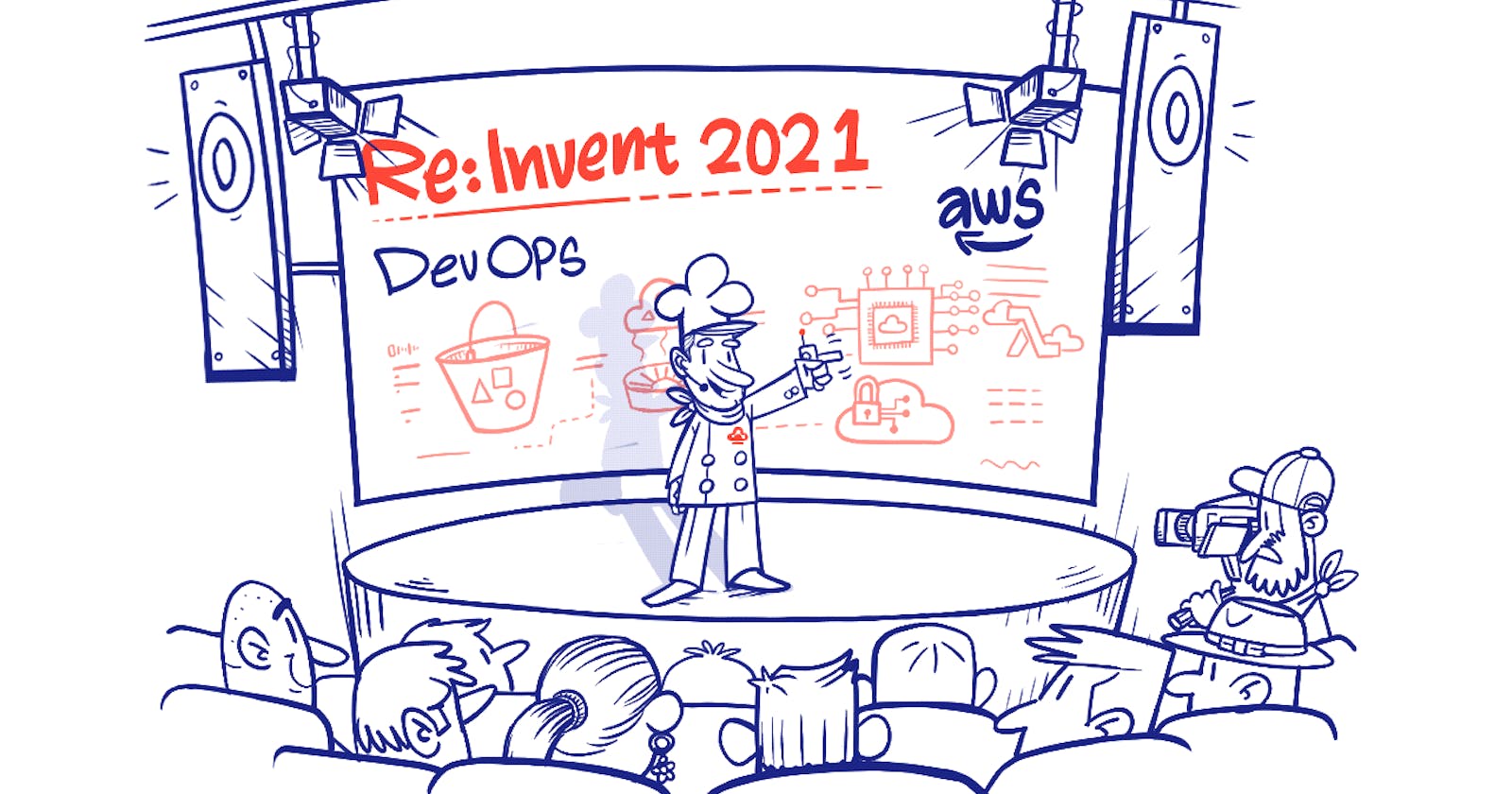This year, AWS re:Invent was special in many ways, first onsite re:invent after the pandemic forced the previous year’s conference to go virtual and also the first re:invent with AWS new CEO, Adam Selipsky delivering a keynote.
AWS made more than 120 announcements during re:Invent 2021, many of them introducing a new service or new feature for an existing service.
In this blog post, we are only going to highlight the most important DevOps announcements that you definitely shouldn’t miss!
AWS Cloud Development Kit (AWS CDK) v2 is now generally available
- What happened?
The AWS Cloud Development Kit (CDK) is an open-source software development framework that helps you define your cloud infrastructure as code (IaC) using various programming languages. Unlike the first version, you don’t need to install an individual package for each services like S3, lambda etc. AWS gathered the AWS Construct Library into a single package called aws-cdk-lib in the CDK v2.
- What difference does it make?
AWS CDK v2 seems to provide an easier way to work and deploy your application so it can result in a faster and more efficient development.
New Sustainability Pillar for the AWS Well-Architected Framework
- What happened?
The AWS Well-Architected Framework helps customers with best practices across multiple pillars: Operational Excellence, Security, Reliability, Performance Efficiency, and Cost Optimization. It also comes with a tool to help you apply these best practices to your application and cloud infrastructure.
- What difference does it make?
AWS introduced a new pillar for Sustainability to help organizations learn, measure, and improve workloads using environmental best practices for cloud computing.
AWS announces Construct Hub general availability
- What happened?
AWS announced Construct Hub, a registry for open-source construct libraries. It supports various construct tools such as CDK, CDK for Kubernetes, and CDK for Terraform.
- What difference does it make?
Construct Hub will simplify the process of cloud development by building your construct on top of other people’s work so you can develop faster and benefit from the community.
Introducing AWS re:Post, a new, community-driven, questions-and-answers service
- What happened?
AWS introduced re:Post, which is a Q & A website for AWS customers (you need an AWS account to ask or answer). You can think of this as a StackOverFlow for AWS services.
- What difference does it make?
It’s still soon to talk about the impact of this service but since previously it could be so confusing to find your answer through other websites likes AWS Forums or Stackoverflow, this service looks promising. It also integrates with AWS Support so in case the community didn’t answer a question, customers with Premium Support subscriptions receive responses from AWS employees for their questions.
Amazon S3 announces a price reduction up to 31% in three storage classes
- What happened?
The cost of storage has been reduced for three S3 storage classes. 31% for S3 Standard-Infrequent Access and S3 One Zone-Infrequent Access now only applied to 9 regions and 10% reduction for S3 Glacier Flexible Retrieval storage class.
- What difference does it make?
With growing amounts of data, storage costs can make a considerable share of your cloud bill. So it’s a good idea to consider other S3 storage classes (other than normal frequent access) whenever applicable to reduce your storage costs. For more information, see the S3 pricing page.
-
- What happened?
AWS customers can now find, subscribe to, and deploy third-party Kubernetes applications from AWS Marketplace on any Kubernetes cluster, in any environment.
- What difference does it make?
This extends the existing AWS Marketplace for Containers capabilities. It also enables users to deploy third-party Kubernetes applications to on-premises environments using Amazon Elastic Kubernetes Service Anywhere (EKS-Anywhere).
Introducing Amazon CloudWatch RUM for monitoring applications’ client-side performance
- What happened?
Amazon CloudWatch RUM is a real-user monitoring capability that helps you identify and debug issues on web applications’ client-side and enhance the end user’s digital experience.
- What difference does it make?
CloudWatch RUM enables application developers and DevOps engineers to reduce avergae time to resolve the client-side performance issues by enabling a faster resolution.
Announcing Amazon DevOps Guru for RDS
- What happened?
Amazon DevOps Guru is an ML-powered capability that automatically detects and diagnoses performance and operational issues within Amazon Aurora.
- What difference does it make?
This new tool helps developers to find and resolve issues and bottlenecks in Relational Database Systems within minutes rather than days.
In the previous post, we covered the Data Science announcements, and in the next post, we’ll cover the most important announcements for Data Engineers.

